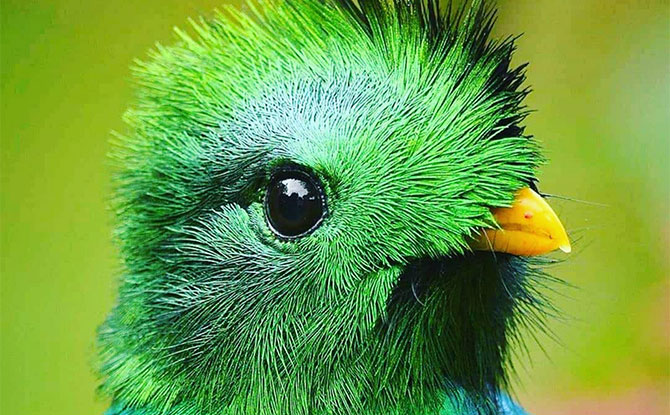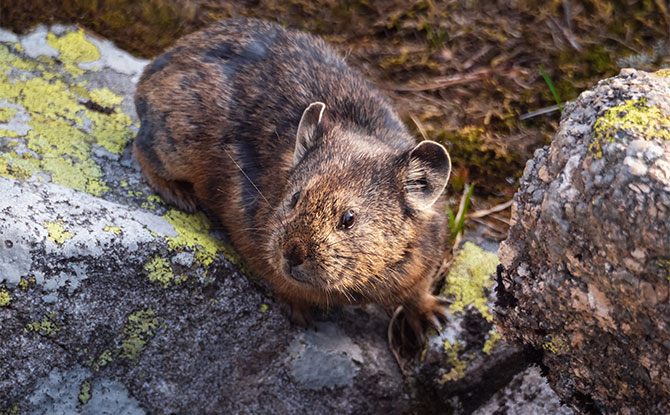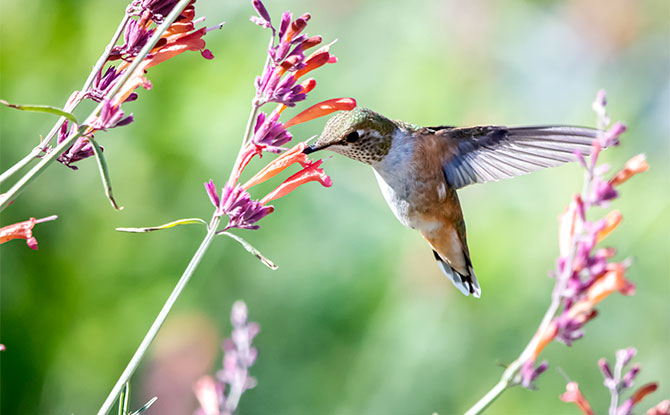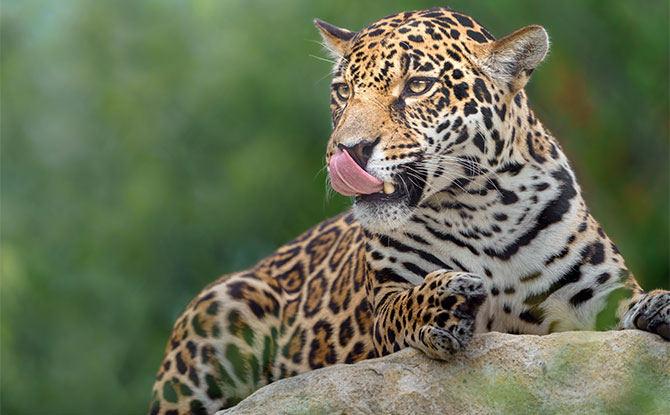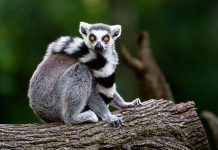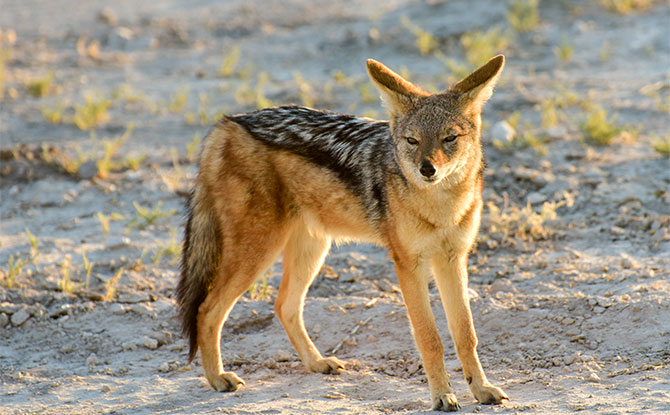
If you’re fascinated by the diverse world of animals, you’ll be thrilled to discover these animals starting with J. From majestic mammals to colorful birds and fascinating invertebrates, the animal kingdom never fails to amaze us with its uniqueness and diversity.
Animals Starting with J
Are you ready to embark on an incredible journey through the animal kingdom? In this article, we will delve into the captivating world of 28 animals that start with the letter J.
Get ready to meet the jaguar, the jellyfish, the jackal, the jaguarundi, the jay, the jerboa, the Javan Rhino, the Javan Gibbon, the Japanese Macaque, the Javan Hawk-Eagle, the jackrabbit, the jackdaw, the Javan Warty Pig, and many more fascinating creatures.
We will explore their habitats, diets and more, and also share interesting fun facts that will leave you filled with wonder and amazement.
BE PSLE-READY: Join Expert Educators for Revision Boosters to Empower P6 Students
BURP: Join the Sound Collector on a Whimsical Chase at Esplanade – Theatres on the Bay
WEEKEND IDEAS: Get Inspirational Ideas of Things to Do
So, join us as we shine a spotlight on these remarkable animals and discover the incredible world of animals that begin with J!
Jaguar


The jaguar, scientifically known as Panthera onca, is a fascinating big cat species known for its strength, agility, and stunning appearance. Native to the Americas, jaguars can be found in a variety of habitats including rainforests, swamps, and grasslands.
One of the most interesting facts about jaguars is their unique hunting style. Unlike other big cats, jaguars are known to swim and ambush their prey from the water. This ability makes them formidable predators, capable of taking down large animals such as deer, tapirs, and even caimans.
Read more about some fascinating and interesting facts about jaguars.
Jellyfish


Jellyfish are fascinating creatures that inhabit the oceans of the world. There are several different types of jellyfish, each with its own unique characteristics and habitat. Let’s explore these amazing creatures and learn more about their intriguing traits.
Jellyfish come in various shapes and sizes, and they belong to different species. Some common types of jellyfish include the moon jellyfish, box jellyfish, and lion’s mane jellyfish. Each type has distinct physical characteristics and behaviors, making them a diverse group within the animal kingdom.
Jellyfish are known for their gelatinous bodies and delicate tentacles. They have a simple body structure without a brain or bones. Instead, they rely on specialized cells called cnidocytes to sting their prey and defend themselves. Jellyfish can range in size from a few centimeters to several meters in diameter, depending on the species.
Jellyfish can be found in nearly every ocean on Earth, from the surface waters to the deep sea. They have adapted to various habitats and can thrive in both warm and cold waters. Some species prefer coastal areas, while others can be found in open ocean environments. Their ability to survive in different conditions contributes to their ecological significance.
Jackal


The jackal is a fascinating species that can be found in various parts of the world. Jackals are members of the Canid family and are known for their distinctive appearance and behavior. There are several jackal species, including the golden jackal, black-backed jackal, and side-striped jackal.
These carnivorous mammals are highly adaptable and can be found in a wide range of habitats, from deserts to grasslands to forests. They have a unique ability to survive in different environmental conditions and have even been known to scavenge for food in urban areas.
The behavior of jackals is highly interesting and complex. They are social animals and live in family groups known as packs. Within these packs, there is a clear hierarchy, with dominant individuals leading the group. Jackals communicate through vocalizations such as howls, barks, and yelps, which serve to establish territory and coordinate group movements.
The distribution of jackals spans across various regions, including Africa, Asia, and parts of Europe. They have adapted to different habitats and can be found in countries such as India, Egypt, Kenya, and South Africa.
Jaguarundi
The jaguarundi, also known as the jaguarundi cat, is a small wild cat species native to the Americas. Its scientific name is Puma yagouaroundi.
The habitat of jaguarundis varies widely, as they can be found in diverse ecosystems such as forests, swamps, and grasslands. They are primarily found in Central and South America, from Mexico to Argentina.
These small cats are known for their solitary nature and agile hunting skills. They are primarily diurnal, meaning they are most active during the day. Their diet consists of small mammals, birds, and reptiles.
Fun fact: The jaguarundi is known for its unique color variations. It can come in shades of gray, brown, and reddish-brown, depending on the individual and its location.
Jay
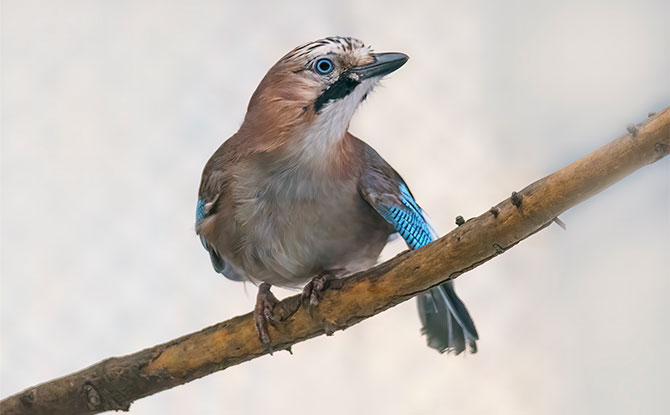

The jay is a medium-sized bird belonging to the Corvidae family. It is known for its colorful plumage and distinctive features, making it a popular bird for birdwatchers and nature enthusiasts. The scientific name for the jay bird is Garrulus glandarius.
Jays are native to various regions, including Europe, Asia, and North America. They can be found in a variety of habitats, from woodlands and forests to gardens and parks. These adaptable birds are known for their ability to thrive in both urban and rural environments.
The jay bird has a diverse diet, feeding primarily on nuts, seeds, insects, and small vertebrates. Their feeding behavior includes caching food for future use, which helps sustain them during harsh winter months when food is scarce.
Fun Fact: Jays are known for their intelligence and ability to mimic the calls of other birds, making them excellent vocal imitators.
Jerboa
Jerboas are adorable creatures that belong to the family Dipodidae. They are small rodents known for their unique adaptations and fascinating behaviors. Jerboas can be found in various species, each with its own habitat and diet preferences.
The jerboa species exhibit different adaptations that enable them to thrive in their respective environments. These adaptations include long hind legs, which allow them to make impressive leaps, and long tails that help with balance and communication.
When it comes to jerboa habitat, these small rodents are typically found in arid and desert regions. They have adapted to thrive in sandy or rocky areas where they can dig burrows for shelter and protection from extreme temperatures. Some species even have specialized fur that helps to reflect the sun’s heat.
Jerboas have an interesting diet that primarily consists of seeds, insects, and vegetation. They are known to be agile hunters and foragers, using their keen sense of hearing and sight to locate prey in their surroundings.
Did you know that jerboas can jump up to 10 feet (3 meters) in a single leap? Their incredible jumping ability allows them to evade predators and traverse their sandy habitats with ease!
Javan Rhino
The Javan Rhino, also known as Rhinoceros sondaicus, is one of the most critically endangered rhinoceros species in the world. It is native to the dense rainforests and grasslands of Java, Indonesia, where its habitat consists of swampy areas and lowland rainforests. The Javan Rhino is known for its distinct physical characteristics, including its one-horned feature and wrinkled skin.
Despite efforts to conserve the Javan Rhino, its population continues to decline rapidly. It is estimated that there are only about 68 individuals left in the world, making it one of the rarest large mammals on the planet. The Javan Rhino faces several threats, including habitat loss, poaching, and limited genetic diversity. Conservation organizations and local governments are working diligently to protect the remaining Javan Rhinos and their habitat.
The Javan Rhino is predominantly herbivorous, feeding on a diverse diet of plants, fruits, and shrubs. These gentle creatures play a crucial role in maintaining the balance of their ecological system. By dispersing seeds through their droppings, they contribute to the regeneration and diversity of plant species in their habitat.
Javan Gibbon
The Javan Gibbon, also known as Hylobates moloch, is an arboreal primate native to the island of Java, Indonesia. With its distinct appearance and unique behaviors, the Javan Gibbon is a fascinating species that deserves attention and conservation efforts.
The Javan Gibbon inhabits the lush rainforests and dense vegetation of Java. They are mainly found in primary and secondary forests, where they swing through the treetops using their long arms and strong limbs. The Javan Gibbon’s habitat is crucial for its survival, as it provides the necessary food sources and shelter for the species.
The Javan Gibbon is known for its highly vocal nature. They communicate with other members of their family group through a complex series of calls and songs, which serve to establish territories and maintain social bonds. These vocalizations can be heard echoing through the forest, creating a symphony of sounds.
Family bonds are strong among Javan Gibbons, with monogamous pairs and their offspring forming close-knit groups. They engage in cooperative parenting, with both parents sharing the responsibility of caring for their young. The Javan Gibbon’s behavior highlights the importance of social connections within their species.
Japanese Macaque
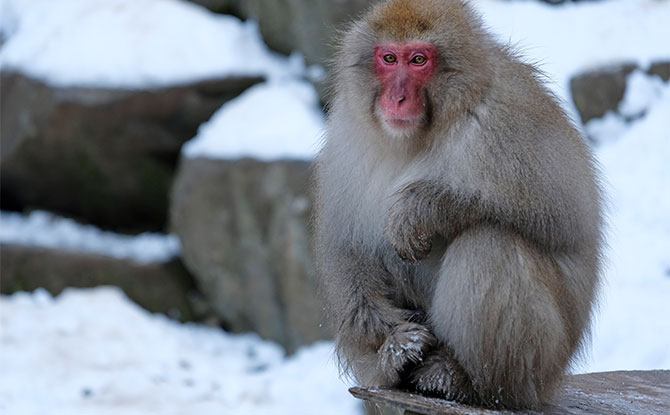

The Japanese macaque, also known as the snow monkey, is a fascinating species native to Japan. These intelligent primates are known for their unique behaviors and adaptability to various habitats.
Scientifically known as Macaca fuscata, the Japanese macaque is primarily found in the forests and mountainous regions of Japan. They have a remarkable ability to survive in cold climates, making them the most northern-living non-human primate.
The Japanese macaque’s habitat includes hot springs, where they famously engage in a behavior called “onsen bathing.” This behavior is not only a way to keep warm but also serves as a social activity, strengthening bonds within the troop.
Japanese macaques are omnivorous, with a diet consisting of fruits, leaves, seeds, insects, and even small animals. They have a complex social structure, living in troops led by dominant females. Within these troops, the macaques exhibit various behaviors, including grooming, vocalizations, and hierarchy establishment.
Japanese macaques are skilled snowball makers and have been observed engaging in snowball fights. This behavior not only helps them play and bond but also allows them to test their agility and coordination skills.
Javan Hawk-Eagle
The Javan Hawk-Eagle, also known by its scientific name Nisaetus bartelsi, is a magnificent bird of prey that can be found in the forests of Java, Indonesia. It is a critically endangered species, with a small population remaining in the wild.
The Javan Hawk-Eagle has a specific habitat preference, typically inhabiting the lower montane and submontane forests of Java. It is well-adapted to this environment, with its strong legs and sharp talons that enable it to grasp and capture its prey with precision. The bird is known for its remarkable hunting behavior, as it soars through the dense forest canopy in search of small mammals, birds, and reptiles to feed on.
The diet of the Javan Hawk-Eagle consists primarily of arboreal prey, including squirrels and birds. Its hunting prowess is enhanced by its agility and formidable flight skills, allowing it to navigate through the intricate forest landscape with ease.
The Javan Hawk-Eagle is a solitary bird, typically seen in pairs during the breeding season. It constructs its nests on tall trees, where the female lays a single egg. Both parents take turns incubating the egg and caring for the young chick until it fledges.
Fun fact: Did you know that the Javan Hawk-Eagle was once considered a subspecies of the Crested Serpent-Eagle? It was only in 2014 that it was classified as a distinct species following genetic analysis and morphological studies.
Jackrabbit
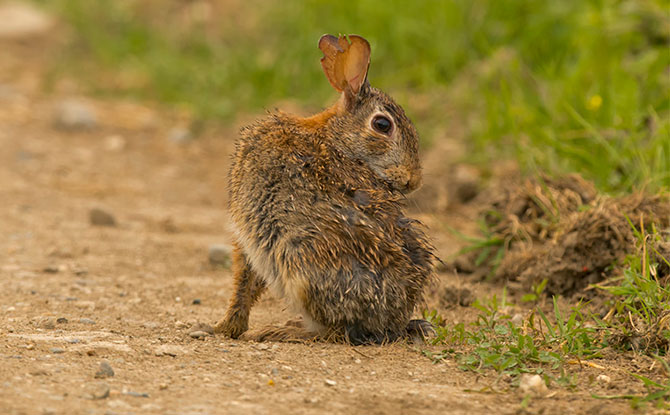

Jackrabbits are fascinating creatures known for their incredible speed and impressive leaping abilities. The scientific name for the jackrabbit species is Lepus. They are native to North and Central America, and can be found in various habitats including deserts, grasslands, and scrublands.
Jackrabbits have adapted to their environments in several ways. Their long ears enable them to detect predators from a distance, while their large hind legs allow them to reach speeds of up to 40 miles per hour (64 kilometers per hour). This adaptation helps them evade their natural predators such as coyotes and bobcats. Additionally, jackrabbits have powerful hind limbs that allow them to leap great distances, helping them escape from danger.
When it comes to diet, jackrabbits are herbivores and primarily feed on grasses, shrubs, and other plant material. Their sharp incisor teeth help them efficiently consume vegetation.
Fun fact: Did you know that jackrabbits are not actually rabbits but hares? Unlike rabbits, which are born hairless and blind, jackrabbits are born fully furred with their eyes open, ready to explore their surroundings!
Jackdaw
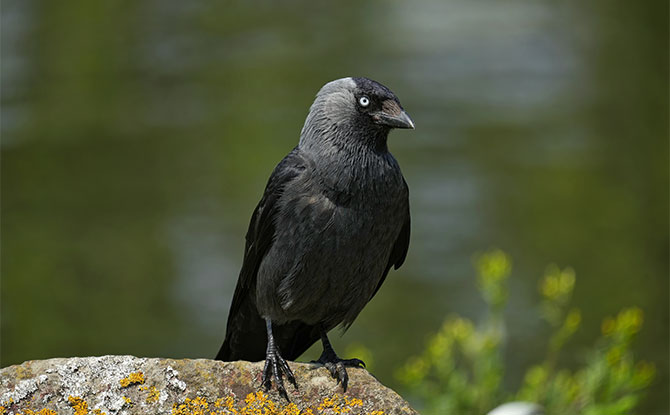

The jackdaw (Corvus monedula) is a small bird in the crow family, known for its distinct appearance and intelligent behavior. It is predominantly found in Europe, Asia, and North Africa. Jackdaws are highly adaptable and can be found in a variety of habitats, including woodlands, farmlands, and urban areas. They are known for their unique nesting behavior, often creating their homes in tree cavities, chimneys, and even in abandoned buildings.
Jackdaws primarily feed on a varied diet that includes insects, fruits, seeds, and small vertebrates. They are opportunistic feeders and can scavenge for food in agricultural fields and waste disposal areas. Their intelligence and resourcefulness allow them to adapt their diet to the available food sources in their habitat.
These birds are highly social and form large flocks outside the breeding season. They exhibit complex social behaviors and engage in cooperative activities such as communal roosting and mobbing predators. Jackdaws are also known for their playful nature and have been observed engaging in aerial acrobatics and playing with objects.
Fun fact: Jackdaws are known for their thieving behavior and can often be seen collecting shiny objects like coins or jewelry.
Javan Warty Pig
The Javan Warty Pig, scientifically known as Sus verrucosus, is a fascinating species of pig that can be found in the dense forests and grasslands of Java, Indonesia. These pigs have a unique appearance, characterized by large warts and stiff bristles covering their bodies.
The habitat of the Javan Warty Pig consists of tropical rainforests and shrublands, where they can find ample food sources such as roots, tubers, fruits, and insects. They are known for their adaptable behavior, often venturing into agricultural areas in search of food.
Japanese Chin


The Japanese Chin is a delightful small breed known for its elegant appearance and charming personality. Also referred to as the Japanese Spaniel, this breed has been favored by Japanese nobles and Chinese emperors for centuries. Today, it is beloved by dog enthusiasts around the world.
The Japanese Chin is a toy breed that typically weighs between 4 to 15 pounds and stands around 8 to 11 inches tall. Its most distinctive feature is its flat face, large round eyes, and silky, flowing coat. The breed’s coat comes in a variety of colors, including black and white, red and white, and black and tan.
The Japanese Chin is known for its friendly and affectionate temperament. It thrives on human companionship and loves to be the center of attention. This breed is gentle and playful, making it an excellent choice for families and individuals looking for a loyal and affectionate companion.
In terms of exercise, the Japanese Chin is not overly demanding. Daily walks or playtime in a secure and safe area are usually sufficient to keep this breed happy and healthy. Additionally, the Japanese Chin is generally good with other pets and children, although early socialization and training are important to ensure proper behavior.
While the Japanese Chin is generally healthy, it can be prone to certain health issues, such as eye problems and respiratory difficulties due to its brachycephalic (short-nosed) structure. Regular veterinary check-ups and a balanced diet are essential to maintain the well-being of this breed.
Overall, the Japanese Chin is a delightful breed that brings joy and companionship to its owners. With its elegant appearance, affectionate nature, and playful personality, it’s no wonder that the Japanese Chin continues to be a beloved breed worldwide.
Javan Rusa
The Javan Rusa, also known as Rusa timorensis, is a species of deer native to the Indonesian island of Java. It is named after the island and the scientific name of the species emphasizes its connection to Timor, another island where it can be found.
The Javan Rusa is known for its distinctive large size, with males typically weighing between 200 and 250 kilograms and measuring up to 1.4 meters at the shoulder. Females are generally smaller and lighter. The species is sexually dimorphic, with males possessing antlers that can reach lengths of up to 100 centimeters.
The habitat of the Javan Rusa includes a variety of ecosystems on the island of Java, including grasslands, forests, and agricultural areas. They are adaptable and can be found in both natural and human-altered landscapes. Javan Rusa are herbivores and primarily feed on grasses, leaves, and fruits.
Fun Fact: Did you know that Javan Rusa are known for their strong swimming abilities? They are often found wading through rivers or swimming to access different areas of their habitat.
Javan Pond Heron
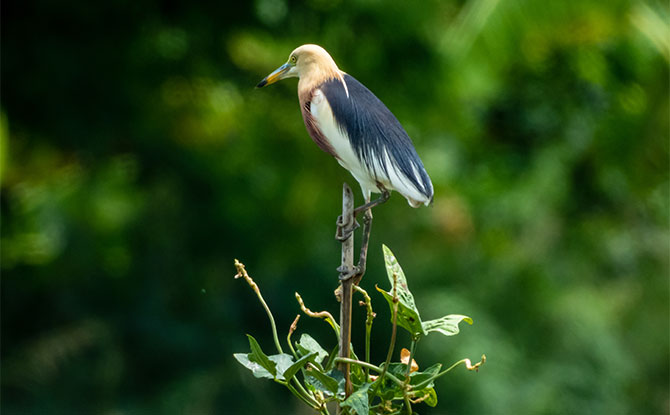

The Javan Pond Heron, scientifically known as Ardeola speciosa, is a fascinating bird species found in the wetlands and marshes of Southeast Asia. They are known for their elegant appearance and unique behaviors, making them a favorite among birdwatchers and nature enthusiasts.
These herons primarily inhabit freshwater habitats such as ponds, lakes, and marshes, hence their name. They are also found in coastal areas, estuaries, and rice fields. The Javan Pond Heron is well adapted to its habitat, with long legs, a slender body, and a sharp beak that helps it catch its preferred diet of small fish, amphibians, insects, crustaceans, and mollusks.
They are solitary birds and often remain concealed in the dense vegetation, patiently waiting for their prey to approach. They use their stealth and patience to their advantage, striking their prey with precision and speed. They are also known for their characteristic hunting technique of standing motionless with their neck extended, resembling a statue, before suddenly striking at their prey.
Fun fact: Did you know that the Javan Pond Heron displays two different plumage colors? During the breeding season, they showcase striking white plumage with elongated feathers on their crown and nape. In the non-breeding season, their plumage becomes a beautiful pale grey, offering them better camouflage in their natural habitat.
Jack Dempsey Fish
The Jack Dempsey Fish, scientifically known as Rocio octofasciata, is a fascinating species that originates from Central America. These unique and colorful fish have become popular among aquarium enthusiasts due to their striking appearance and interesting behavior.
Jack Dempsey Fish are naturally found in freshwater habitats such as rivers, streams, and lakes in Central America, including Mexico and Honduras. They prefer calm, slow-moving waters with areas of vegetation and hiding spots, such as rocks or driftwood.
Jack Dempsey Fish are known for their territorial and aggressive nature. They can become highly territorial during breeding and may exhibit aggressive behavior towards other fish in the same tank. It is important to provide them with enough space and suitable tank mates to minimize aggressive interactions.
Jacana
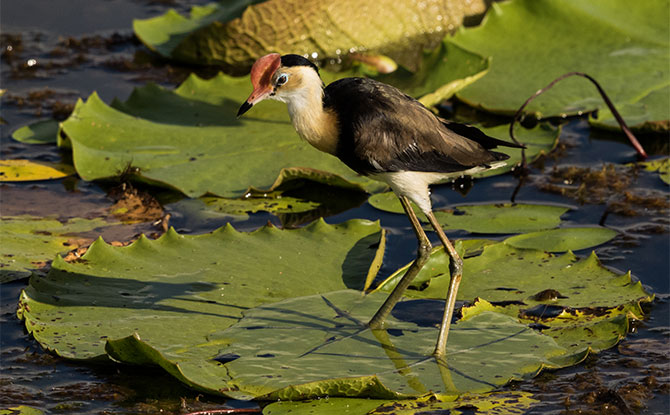

Jacanas are unique and fascinating birds that belong to the family Jacanidae. There are several species of Jacanas, each with its own distinct characteristics and behaviors. These birds are well-known for their incredible adaptation to wetland habitats, where they can be found roaming on lily pads and floating vegetation.
Jacanas are known for their long toes and claws, which enable them to walk on water lilies and other aquatic plants without sinking. This adaptation allows them to easily navigate their wetland habitats and search for food, which primarily consists of insects, crustaceans, and small aquatic creatures.
Both males and females take part in nest building and incubating the eggs. The males, in particular, are known for their unique role reversal in parenting, as they take on the responsibility of incubating the eggs and raising the young while the females seek out new mates and territories.
Jacanas are found in various regions around the world, including Africa, Asia, and the Americas, with different species occupying different habitats such as swamps, marshes, and lakes. Their striking appearance, with their bright colors and long legs, makes them a sight to behold.
Fun Fact: Jacanas are also known for their unique feeding behavior called ‘leaf-flipping’ where they flip over leaves to uncover hidden prey.
Jacob Sheep
Jacob Sheep, scientifically known as Ovis aries, are a unique breed known for their distinctive appearance and historical significance. These sheep are named after the biblical character Jacob, as they are believed to have originated in the Middle East thousands of years ago. Today, Jacob Sheep can be found in various parts of the world, including North America, Europe, and Australia.
The Jacob Sheep breed is known for its striking appearance, characterized by their multi-colored wool and unusual pattern of spots. These spots can come in a variety of combinations, including black and white, brown and white, and sometimes even a rare solid color. This unique coat makes Jacob Sheep easily recognizable and highly sought after by breeders and farmers.
In terms of characteristics, Jacob Sheep are known for their hardiness and adaptability. They have the ability to thrive in different climates and terrains, including rugged mountains and harsh environments. Additionally, Jacob Sheep are known for their resistance to diseases and parasites, making them relatively low maintenance compared to other sheep breeds.
As for their habitat, Jacob Sheep can be found in a range of environments, including pasturelands, woodlands, and even moorlands. They are adaptable grazers and are often seen foraging for food in meadows and open fields. Their ability to graze on a variety of vegetation makes them resilient and well-suited to a diverse range of habitats.
A fun fact about Jacob Sheep is that they are known for their ability to produce multiple lambs in a single pregnancy, making them highly prolific breeders. This trait has contributed to their popularity among farmers and smallholders looking to increase their flock size.
Jacamar
The Jacamar is a fascinating bird species known for its vibrant colors and unique adaptations. Its scientific name is Galbula ruficauda. Jacamars can be found in the tropical rainforests of Central and South America, making them a key component of these ecosystems.
These small to medium-sized birds have a distinctive appearance with their long bills and colorful plumage. There are several species of Jacamars, each with its own unique characteristics and adaptations.
One interesting adaptation of Jacamars is their specialized bill shape. Their long, slender bills are perfectly designed for catching and feeding on insects, which make up the majority of their diet. Jacamars are skilled at hunting insects in mid-air, thanks to their agile flight and sharp beaks.
The habitat of Jacamars is primarily within the dense forests, where they can find an abundance of insects to feed on. They prefer areas near rivers or streams, as these locations offer a higher concentration of insect prey. With their vivid colors and distinct calls, Jacamars add vibrancy and sound to the rainforest.
Fun fact: Jacamars are known for their unique calls, which often resemble the sound of a “jacamara.” These calls serve as territorial markers and are used for communication between Jacamars.
Jackfruit Bat
The Jackfruit Bat, also known as the Artibeus heterodon, is a fascinating species of bat that can be found in the tropical rainforests of Central and South America. Known for its unique diet and behavior, the Jackfruit Bat has earned its place in the diverse world of bats.
When it comes to habitat, the Jackfruit Bat prefers to roost in the dense vegetation of the rainforest, making its home in tree hollows or abandoned buildings. These bats are highly adaptable and can also be found in disturbed habitats, such as plantations and agricultural areas.
As for their behavior, Jackfruit Bats are primarily nocturnal, using their excellent echolocation skills to navigate and locate food during the night. They are fruit-eating bats, with a particular preference for ripe jackfruit and other tropical fruits. In fact, the Jackfruit Bat is one of the few species that has the ability to disperse jackfruit seeds, contributing to the regeneration and survival of these trees in the rainforest.
Interestingly, the Jackfruit Bat is also known for its unique vocalizations. These bats produce a variety of sounds, including social calls that are used for communication with other members of their colony.
One interesting fact about Jackfruit Bats is that they have an important role in the ecosystem as seed dispersers. By feeding on fruits and then flying to different locations, they help in the dispersal of seeds, supporting the growth and diversity of plant species in the rainforest.
Jack Russell Terrier


The Jack Russell Terrier is a small and energetic breed known for its lively and lovable nature. These dogs are named after the Reverend John Russell, who developed the breed in the 19th century.
Jack Russell Terriers are commonly referred to as “Jacks” and are known for their distinctive appearance and charming personality. They have a compact and muscular build, with a short coat that comes in a variety of colors and patterns.
One of the main characteristics of the Jack Russell Terrier breed is their high energy level. They are active and playful dogs that require regular exercise and mental stimulation to keep them happy and healthy. Jack Russell Terriers are often described as fearless and tenacious, with a strong prey drive.
In terms of temperament, Jack Russell Terriers are generally intelligent, alert, and independent. They are quick learners and can be trained to perform various tasks and tricks. However, they also have a stubborn streak and may require patient and consistent training methods.
Jack Russell Terriers are known to be highly sociable dogs and enjoy being part of the family. They are often good with children and can get along well with other pets if properly socialized from an early age.
Jackal Buzzard
The Jackal Buzzard, scientifically known as Buteo rufofuscus, is a majestic bird of prey that can be found in Southern Africa. It is known for its impressive aerial acrobatics and sharp hunting skills.
The Jackal Buzzard is commonly found in a variety of habitats, including open grasslands, savannas, and mountainous regions. Its wingspan can reach up to 1.2 meters, allowing it to glide effortlessly in search of prey.
As a carnivorous bird, the Jackal Buzzard primarily feeds on small mammals, birds, reptiles, and insects. Its diet consists of rodents, snakes, lizards, and even carrion. This opportunistic hunter utilizes its sharp talons and keen eyesight to spot and catch its prey.
When it comes to behavior, the Jackal Buzzard is known for its soaring flight patterns and ability to hover in the air. It often uses thermals, rising columns of warm air, to gain altitude and conserve energy during flight.
During the breeding season, Jackal Buzzards are known to form monogamous pairs. They build large stick nests in tall trees or on cliff ledges where they lay their eggs. Both parents actively participate in incubating the eggs and raising the young.
A fun fact about Jackal Buzzards is that they are known for their distinctive call, resembling a high-pitched “kee-ah” sound. This vocalization is often used for territorial communication and courtship.
Javanese Rat Snake
The Javanese Rat Snake, scientifically known as Ptyas carinatus, is a fascinating reptile native to the Indonesian island of Java.
When it comes to habitat, the Javanese Rat Snake is adaptable and can be found in various environments, including forests, grasslands, and agricultural areas. It is known to thrive in both lowland and mountainous regions, making it a versatile and resilient species.
It is primarily diurnal, which means it is active during the day. This snake species is known for its agility and fast movements. It is also an excellent climber and can be found slithering up trees and other vegetation in search of prey.
Speaking of diet, the Javanese Rat Snake is a carnivorous species. It feeds on small vertebrates, including rodents, birds, and lizards. Its ability to consume a wide range of prey items contributes to its success in various habitats.
One remarkable feature of the Javanese Rat Snake is its slender and elongated body, which allows it to move swiftly and navigate through narrow spaces. This snake species can reach an impressive length of up to two meters (six and a half feet).
Jalpa false brook salamander
The Jalpa false brook salamander is a unique amphibian species with a scientific name Ambystoma jalpae. It is primarily found in the Jalpa de Mendez region in Mexico. This species of salamander has a distinct habitat preference and behavior, which contributes to its conservation status.
The Jalpa false brook salamander is known to inhabit small, clean mountain streams and rivers in the Jalpa de Mendez area. Its habitat includes rocky areas with dense vegetation, where it can find shelter and ample food sources. Conservation efforts are focused on preserving the water quality and surrounding habitats of these streams and rivers to ensure the salamanders’ survival.
When it comes to behavior, the Jalpa false brook salamander is primarily nocturnal, preferring to be active during the night. It is a shy and elusive species, often hiding under rocks or other aquatic vegetation during the day. This behavior helps protect the salamanders from potential predators and allows them to feed undisturbed.
Fun Fact: The Jalpa false brook salamander is a master of camouflage, blending in perfectly with its rocky aquatic habitat, making it difficult for predators to spot.
Japanese Giant Salamander
The Japanese giant salamander is a remarkable amphibian species native to Japan, known for its distinctive appearance and fascinating characteristics. As one of the largest salamander species in the world, reaching lengths of up to 1.5 meters (5 feet), these creatures command attention with their impressive size and elongated bodies.
Their dark, mottled skin, often covered in algae and other aquatic vegetation, provides effective camouflage in their freshwater habitats, allowing them to blend seamlessly into their surroundings. Additionally, their flattened heads and broad bodies contribute to their streamlined shape, ideal for navigating the fast-flowing rivers and streams they call home.
Despite their large size, Japanese giant salamanders are elusive and primarily nocturnal, spending much of their time hidden beneath rocks or submerged in water. They are solitary creatures, preferring a solitary lifestyle except during the breeding season when they seek out mates. With their keen sense of smell and sensitive skin, they rely on these senses to locate prey such as fish, insects, and crustaceans in the murky waters they inhabit.
Japanese Bobtail
The Japanese Bobtail is a unique and captivating breed of cat that originated in Japan. Known for its distinctive bobbed tail, this breed is cherished for its beauty, charm, and playful nature. Japanese Bobtails are characterized by their short, pom-pom-like tails, which are the result of a natural genetic mutation.
One of the most notable features of the Japanese Bobtail is its elegant appearance. These cats have a slim and muscular build, with almond-shaped eyes that can be any color, adding to their allure. Their coat comes in a wide range of colors and patterns, including calico, tortoiseshell, and tabby.
Not only are Japanese Bobtails visually stunning, but they also have a delightful personality. They are known for their intelligence, curiosity, and outgoing nature. Japanese Bobtails are social cats that enjoy interacting with their human companions and other pets. They are highly adaptable and make wonderful additions to any household.
The behavior of Japanese Bobtails is often described as dog-like, as they can be trained to perform tricks and can even learn to walk on a leash. They are playful and active cats that require mental and physical stimulation to thrive. Engaging in interactive play sessions and providing them with puzzle toys can help satisfy their need for mental and physical exercise.
They have a wide range of sounds, from soft chirping to trilling, which they use to communicate with their human and feline family members.
Javelina
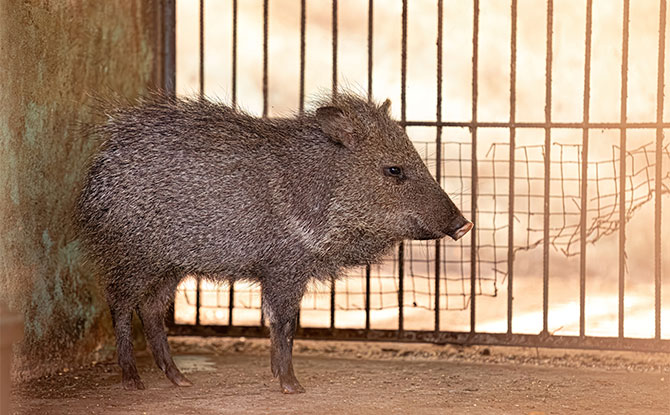

Discover the fascinating world of Javelinas, also known as collared peccaries or skunk pigs. These unique creatures are native to the Americas and are renowned for their intriguing behavior and distinctive appearance.
Javelinas can be found in a variety of habitats, including deserts, brushlands, and forests. They are highly adaptable and have successfully established themselves in both rural and urban areas. Their natural curiosity often leads them to explore new environments, making them a fascinating sight for nature enthusiasts.
When it comes to diet, Javelinas are omnivores, meaning they consume a combination of plant matter and small animals. Their diet consists of cacti, roots, fruits, insects, and occasionally small vertebrates. This versatility allows them to thrive in different ecosystems, even during times of scarcity.
One interesting behavior exhibited by Javelinas is their strong sense of community and social structure. They live in groups known as “sounders,” which typically consist of females and their offspring. These groups work together to defend their territory, find food, and care for their young. Their cohesive nature and strong bonds contribute to their overall survival and adaptability.
If you enjoyed this story, we think that you will also enjoy this one on animals that start with letter I.









